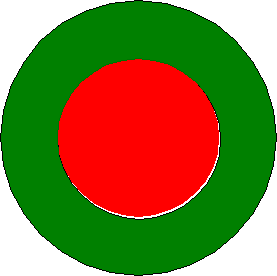Força Aérea
Portuguesa (Portuguese Air Force) in brief
In May 27, 1952 is published the Law 2055 that joined in a unique entity - Força Aérea Portuguesa- (Portuguese Air Force) the Army and Navy air branches. July 1, 1952 was appointed as the initial date for the official existence of the Air Force.
The new born Portuguese Air Force started with the following installations
and flying units:
One Spitfire group with three Esquadrilhas - MR, RL and ZE. This last one also had T-6, Gladiators and Miles Magisters
One Hurricane group with three Esquadrilhas - TY, SU and GL.
The early fifties saw not only the reorganization of the Air Force according to NATO philosophy but also the incorporation of several Naval Aviation aircraft, and the reception of modern aircraft, including the first jets in 1952.
In addition new air bases were added :
The squadrons also received a new designation system with two digits, the first one indicating the Air Base to which they belonged. As an example the two squadrons of F-86F at B.A.5 were 51 and 52 forming together the Grupo de Caça 501 (Fighter Group 501). Each Squadron had 25 aircraft.
In 1958 a mission was sent to Angola to study the re-activation of the Air Force there. This study gave some indications for the installation of air units , and in April 1959 the "Exercicio Himba" (Himba Exercise) took to Angola 6 C-54, two Dakotas and 6 PV-2 Harpoons.
In December 1958 there were 322 aircraft on the inventory, and in December 1960 they numbered 386.
1961-1974
With the war in Angola in 1961, and later in Guiné-Bissau
and Moçambique the Air Force had to move in a short period aircraft
and material to three fronts, using the available resources
at the time.
In the mid-sixties the structure in Africa was as follows.
Primeira Região Aérea (First Air Region) with headquarters at Lisbon:
Included Aeródromo de Trânsito 1 at Sal Island
(Cape Vert Islands), B.A.12 at Bissau, and Aeródromos de Manobra
at Bafatá, Tite and Bubaque.
Segunda Região Aérea (Second Air Region) with headquarters at Luanda (Angola):
Included Aérodromo de Trânsito 2 at São Tomé
Island (South Atlantic), Base Aérea 9 at Luanda (Angola),
two Aeródromos-Base at Angola, 6 six Aeródromos
de Manobra and three Aeródromos de Recurso
.
Terceira Regiao Aérea (Third Air Region) with Headquarters at Lourenço Marques (Moçambique)
Included Air Base 10 at Beira, 4 Aeródromos Base,
7 Aérodromos de Manobra, and 5 Aeródromos de Recurso.
Practically all types of aircraft were used in Africa: from the jets (F-84G in Angola and Moçambique, F-86F in Guiné Bissau, G.91 in Guiné, Moçambique and Angola) to the DO-27 and Austers, passing through the Dakotas, C-45's, and Noratlas.
Also during the sixties the Base Aérea 11 at Beja was activated, which also housed part of the training syllabus of the Bundesluftwaffe.
In 1964 was commemorated the cinquentenary of the Military Aviation with a impressive air festival (and the first since 1956) at Alverca.One of the authors (the elder one...) still remembers very well the low level bombing and guns firing of the F-86F Sabre.
Iin December 1971 the aircraft in FAP inventory had increased to
684.
1974 - to date
With the end of war in Africa, FAP rapidly decreased in size, adapting to the new situation, and in February 1978 a change in the structure defined the flying units as follows:
Esquadrilhas - 4 to 6 aircraft
Esquadras - The basic unit with 2, up to 4 or 6 Esquadrilhas.
Grupo - Composed by two or more Esquadras
The Esquadras were designated by three digits no more related with the Air Bases in which they were located , but with their mission.
So the first digit meant: 1 - Training, 2- Fighter, 3-Attack, 4 -Reconnaissance, 5 - Transport, 6 - Maritime Patrol, 7 - Liaison, 8 - Search and Rescue. The second digit meant 0- Fixed Wing Aircraft, 1- Helicopters, and the third digit the chronological order of appearance.
This organization remains more or less the same today.
For the actual organization and equipment of FAP the best way
is to look at their official and very well presented page located at www.emfa.pt.
- Presença da Força Aérea
em Angola - Edgar Cardoso - 1963
- 50 anos de Aviação Militar -
OGMA - 1964
- MAIS ALTO - Special Edition - May 1964 - Cinquentenary
of FAP
- Força Aérea Portuguesa - July
1966 - FAP edition
- História da Força Aérea
Portuguesa - 3º Volume - Edgar Cardoso - 1984
- Bordo de Ataque - José Krus Abecasis
-Coimbra - 1985
